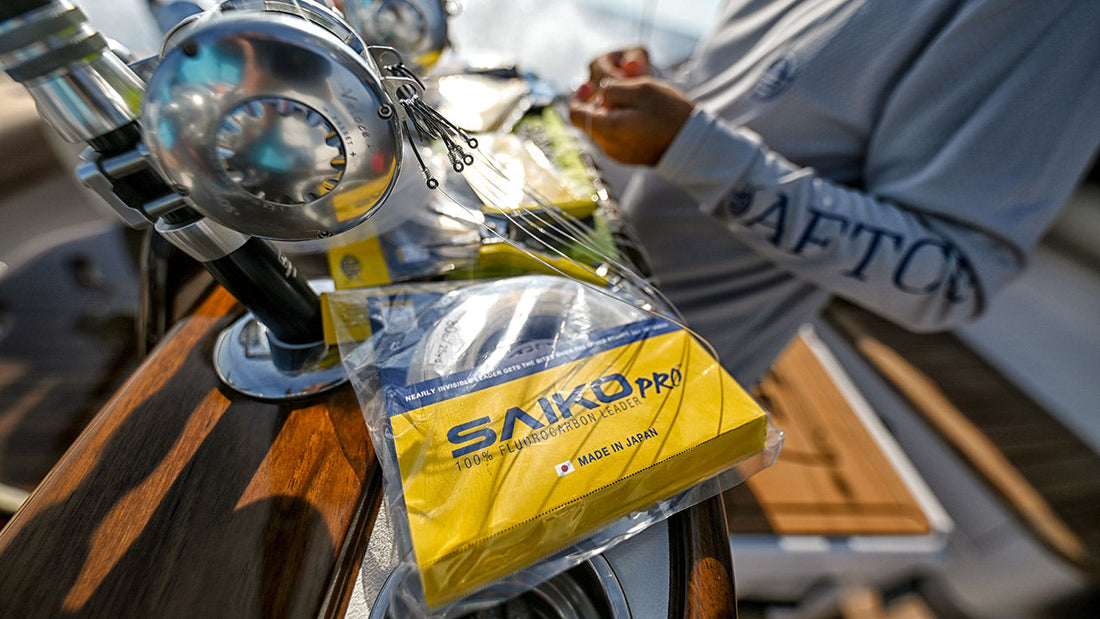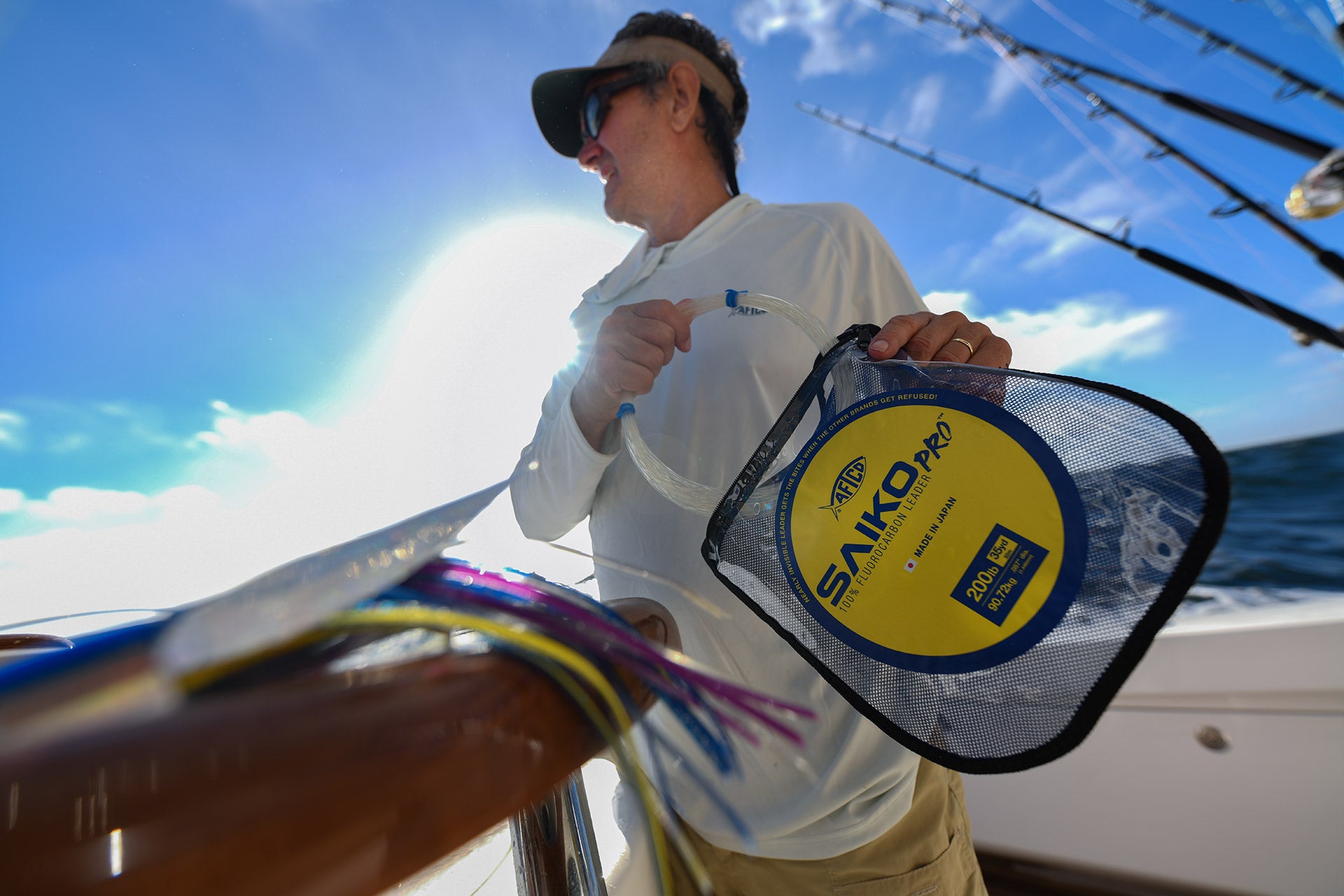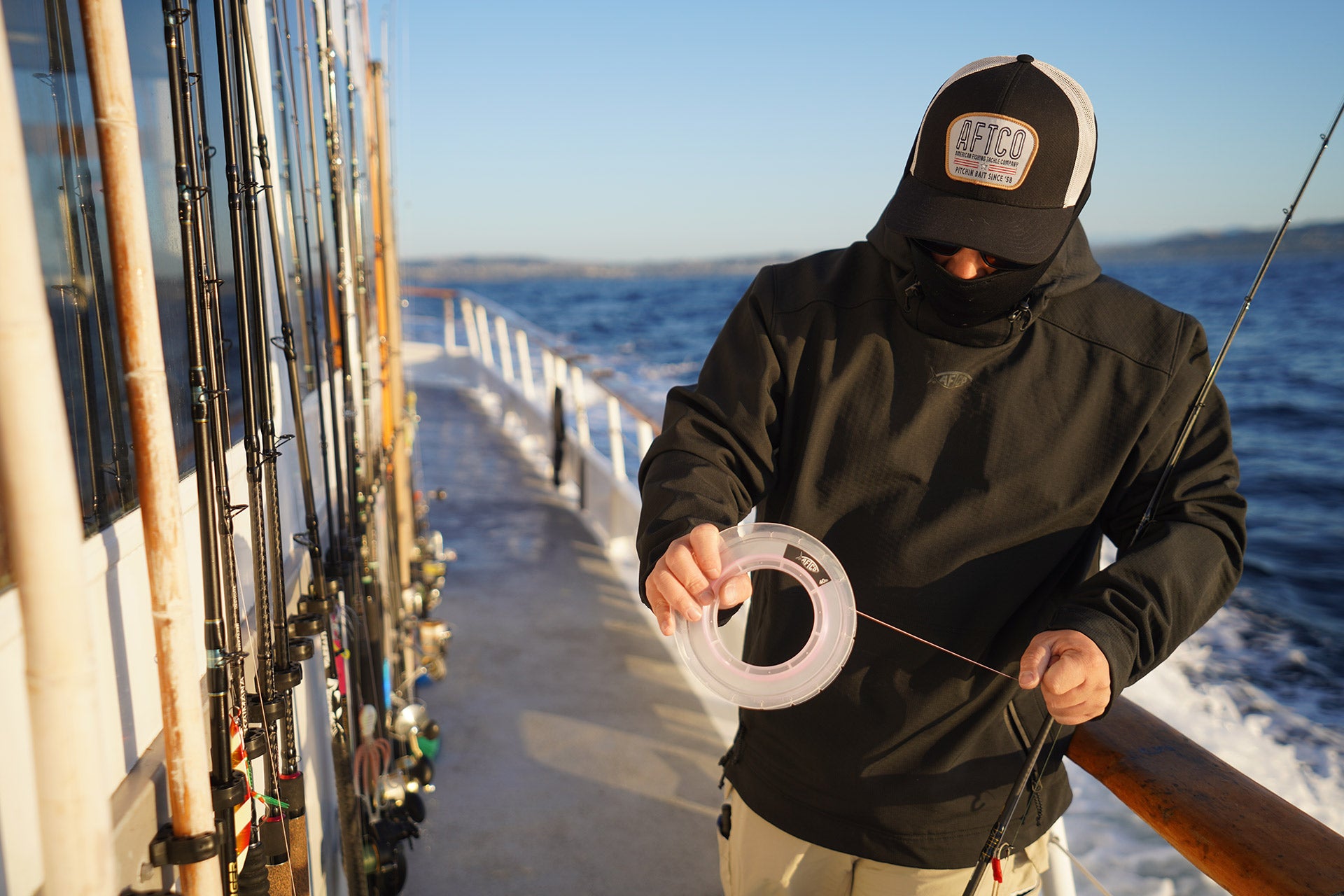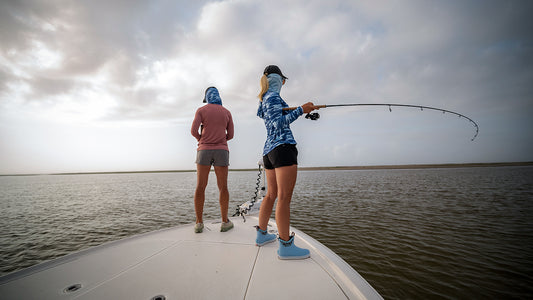
Fluorocarbon Fishing Line: What it is and Why You Need It.
Fluorocarbon has been an increasingly popular topic among anglers and for good reason. Although Fluorocarbon fishing line looks almost identical to nylon monofilament, the differences are clear when you look at the two under water. Fluorocarbon leader gives anglers an edge compared to nylon monofilament and offers characteristics that will take your fishing to the next level. Here are a few of the most notable benefits:
1. More Abrasion Resistant
While any nylon or fluoro line can succumb to abrasion, it takes a good bit more abrasion to damage fluoro than nylon. Fluoro leader will take more abuse from reefs, hulls, teeth, scales and so on.
2. Less Visible
The light-refraction index of fluorocarbon is much closer to the refractive index of water than nylon. No, it’s not “invisible,” but it’s far harder to see, hence its popularity in fisheries where target species tend to be line shy (probably no better example than with tuna). The decrease in visibility can also allow the use of slightly heavier leader, another advantage fluoro offers.
3. Heavier
In fluorocarbon (Specific Gravity (SG) of 1.78), molecules are more tightly packed than in nylon (SG of 1.14), so in water (SG of 1.0), it will sink rather than float or suspend. This is often an advantage, as when free lining small live baits, for instance.
4. Absorbs Less Water
Nylon line or leader absorbs water, which weakens it. That’s why when the IGFA tests mono lines for line and tippet-class world records, they soak them for two hours at room temperature. Fluoro exhibits minimal water absorption, so the strength changes little when in use.

What is Fluorocarbon Fishing Line?
Fluorocarbon leader was introduced to recreational fishing in the early 1970s in Japan when it was made from a carbon compound known as vinylidene fluoride resin. Soon, manufacturers began using the fluoropolymer PVDF. Fluoro developed a huge following among saltwater anglers in the 1980s and among bass fishermen in the ‘90s.
Other properties that differentiate fluoro from nylon include stretch. Fluorocarbon is said to stretch far less than mono (which often stretches 10 to 15 percent); though it does stretch, it requires more force to do so. Another plus for anglers: the sun’s UV rays don’t degrade fluorocarbon as they can nylon, after long exposure. Fluoro exhibits excellent knot strength, but it’s far more critical than with mono to thoroughly wet the leader before cinching a knot. Anglers refer to line "burning" where the friction created by two dry lines cinching down on themselves will actually micro-burn the line and cause damage.

AFTCO released Saiko Fluorocarbon Fishing Line in 2019 and have led the way in fluorocarbon leader fishing line since then. Containing all of these characteristics that make fluoro better than mono, Saiko provides increased abrasion resistance than most fluorocarbons as well. What does this look like? Every fluorocarbon leader is going to be abrasion resistant. At the same time, all fluoros are going to abrade when rubbing against something sharp. The real test is how does the line perform after it is weakened. This is where AFTCO's Saiko stands out, providing a stronger more durable line post-abrasion. When that fish takes you into the rocks, the reefs, the docks, you will have the confidence that you can still pull on the fish to get it to the boat when using Saiko Pro compared to the competitors.
Choosing Fluorocarbon Leader Strength
In fluorocarbon and nylon monofilament alike, diameter for both line and leader material varies for any given strength (pound-test rating). Americans typically choose their leader size based on the strength stated on the spool. Leader material of a given strength is typically similar in diameter from brand to brand.
High-quality fluoro leader manufacturers offer a range of strengths. AFTCO’s Saiko Pro is available as light as 12-pound (.011-inch diameter) and up to 300-pound test (.072-inch diameter). This gives the angler many options depending on what species and the gear being used.
Typically, experienced anglers want to go lighter vs. heavier when it comes to fluoro leader size. That’s not surprising since a key reason to choose fluorocarbon (though it’s pricier) over mono is reduced visibility in the water. Even with hard-to-see fluoro, most pros go as light (as thin a diameter) as they can get away with. That said, there’s a critical trade-off in that the smaller the diameter, the less visible leader; however, it will then be less resistant to abrasion. Fish leader too light and you may gain more strikes but lose more fish. Too heavy and your target species may avoid the baits. So when determining the strength of their leader, smart anglers find a balance, often through trial and error.

For Capt. Chris Trosset, an AFTCO pro and top Key West skipper (www.reelflykeywest.com), bottom fishing is a big draw, and yellowtail snapper are probably the most targeted of all bottom species. The strength of the Saiko Pro fluoro leader he chooses is, even for this one species, dictated by water clarity. “When the water turns to gin-clear blue” over the reefs, “I’ll go to 20-, 15- or even 12-pound leader.” Trophy-size yellowtail can be very finicky, Trosset says, so the key is fluoro leader light enough to be overlooked “but strong enough to pull a 3- to 4-pounder past the sharks.” When water isn’t so clear, Trosset will bump up to 30-pound Saiko. For most of his other fishing, including patch reefs for larger snapper and grouper, as well as offshore for blackfin tuna and sailfish, Trosset sticks with 6- to 8-feet of 40-pound for his fluoro leaders.







